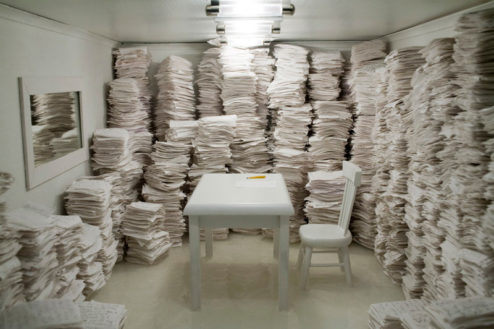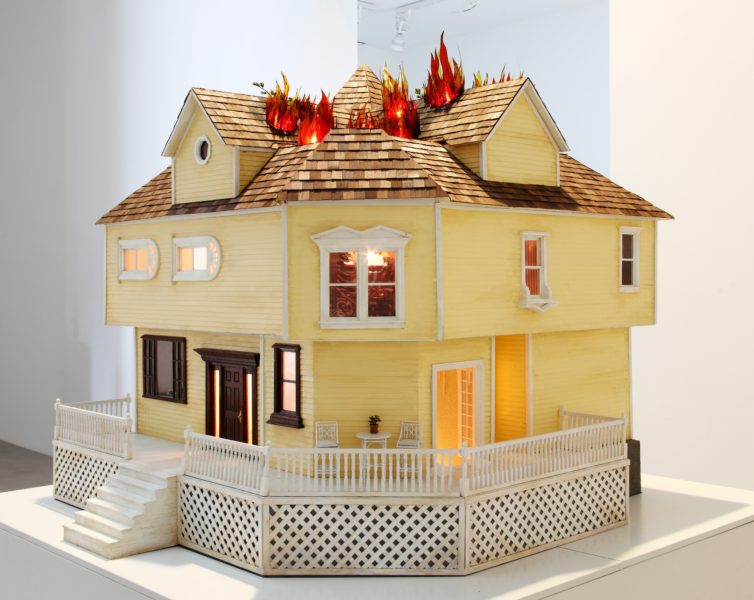Conspiracy theories have long been used as fodder for artists even before the dismissive term was coined by the CIA in 1967 in response to widespread skepticism about the Warren Commission report on the assassination of JFK. In Dr. Strangelove from 1964, Stanley Kubrick directed Peter Sellers to restrain his own arm from making a Nazi salute. The character was modeled on Nazi engineer Wernher von Braun who was relocated to the US to work for NASA.
Some conspiracy theories are based on factual evidence of the government’s clandestine activities, some are based on circumstantial information, and of course others invent an alternate reality that is intended to pave the way for fascist leadership, for example the antisemitic conspiracy theories of the Nazis or QAnon.
Sarah Anne Johnson’s House on Fire (2009) is based on the trauma that her family actually suffered at the hands of the US and Canadian governments. The artist worked with her family archives that detailed her grandmother, Velma Orikow’s experience with Dr. Ewen Cameron’s psychiatric ward at the Allan Memorial Institute of Psychiatry at McGill University in Montreal, which she entered when suffering from post-partum depression. At the time, neither Orikow nor the family knew that her treatment was part of the CIA-sponsored Project MKUltra. During this treatment in which the goal was to empty and reprogram the mind, Johnson’s grandmother was subjected to different types of brainwashing experiments including extreme electroshock therapy, sleep deprivation, LSD, chemical and radiation treatments, and constant verbal abuse. Unsurprisingly, she was permanently damaged by these mind control “treatments” and the whole family suffered the consequences of Orikow’s resulting severe depression and bouts of rage.Burning House represents this nightmare for three generations with a burning doll house. You can peer into the rooms to see disturbing vignettes intended to demonstrate how the torture invaded the family’s home. One room has a figurine of Orikow dancing naked with a fully clothed male doctor. Another vignette appears to be an observation room with a two-sided mirror and reams of notes.


